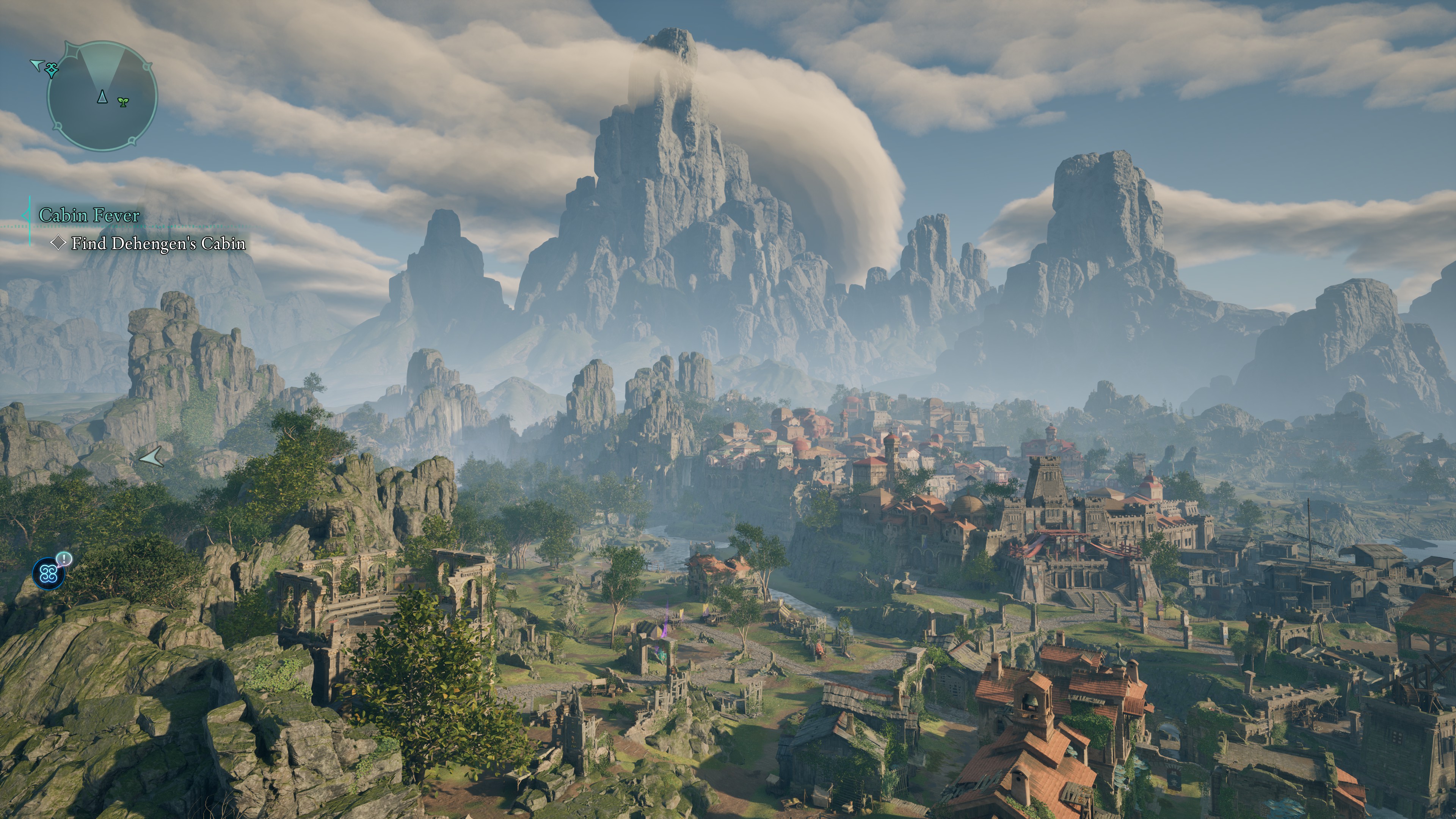Avowed is a vast game with some weirdly complicated progression elements about which the jury’s still out, but I want to praise a moment of pure, perfect simplicity. Near the beginning of the game, you encounter a lighthouse. It calls to you, not via a quest but by virtue of looking really cool and being very tall. It rules.
The lighthouse lies just off the beaten path of a harbor you arrive in after completing the game’s opening tutorial. Let’s start with the glaringly obvious: It’s a Ghibli-ass lighthouse. That, unto itself, was enough to ensnare me in its gravitational pull. My newly-acquired companion, Kai, was happy to tell me that it’d been abandoned under mysterious circumstances, which only provided additional incentive to climb it.
This lighthouse is ideally placed in terms of both physical location and when it appears in your journey. By this particular point, you probably haven’t jumped all that much; you’re still coming to grips with how far a regular leap will take you, how much a sprint will add to that, etc. The lighthouse is by no means a complicated climbing puzzle, but it includes just enough dicey jumps to make you tense up every time – especially as you ascend ever higher. It’s quietly thrilling in a way it wouldn’t otherwise be if it came later in the game.
It also wordlessly conveys a series of important mechanical messages: first and foremost, that there’s gonna be a lot of jumping and clambering in this game! More than you’re maybe used to from others in the genre. But it’s all very intentional. Avowed’s setting feels carefully handcrafted in a way open worlds – often characterized by interminable expanses, map size for map size’s sake – don’t always, and verticality is a big part of that. Each area is denser than it initially appears. You’ve just gotta look up.
The visual language of said verticality then takes center stage. Ropes dangle from surfaces you can hoist yourself up onto. Nooks and crannies give way to alternate jumping paths which lead to loot and other goodies, but you’ve gotta pause for a beat and allow your eyes to happen upon them. And, most importantly, chests and other collectibles make a shimmering noise when you’re near them – a fact you may not have internalized in the tutorial area, but which is on full display as you make your way into the combat-free lighthouse’s upper reaches.
Then you reach the top, and a couple things happen: 1) You find a treasure map, which introduces you to one of the game’s many quest types. 2) You take in the view, which is exquisite.

It’s a moment not unlike what you’d encounter in an Assassin’s Creed game, except no map markers told you to go there, nor was climbing itself functionally automated. Similarly, I didn’t take in the sights and gain a clearer understanding of the map’s scope because a cutscene grabbed me by the digital eyeballs and said “Look over there!!!” I did so because I’d put real effort into reaching that point, and I decided that I was going to make the most of it. Also, Avowed’s art design is so gorgeous that I found myself compelled to try viewing it from another angle, to test if it could maintain its picturesque quality. It passed with flying colors.
My business with the lighthouse seemingly finished, I turned my attention to the tall task of getting down. I didn’t really want to retrace my hops, skips, and jumps if I could avoid it, and then I saw precisely what I was looking for: a slight outcropping with some ropes dangling over the edge. Again, in this instance Avowed adds back a small amount of friction that games like Assassin’s Creed remove: No tutorial voice told me to take a leap of faith. In fact, as I gingerly peered out over the ledge, I saw the ocean, but also a whole lot of cliffside that I wasn’t sure even a full-speed sprint jump would allow me to clear.
But I had to try. And so I ran, leaped, and plummeted. On the way down, my character let out one of the least dignified screams I’ve ever heard from a fantasy hero. Then he crashed into the water, rattled but blessedly intact. In real life, I laughed out loud, exhaling the anxiety I’d kept pent up during both the climb and the descent.
There’s a palpable human touch to Avowed’s environment design. I’m nearly certain that this is the exact experience a person wanted me to have – the full range of emotions they wanted me to feel – while maintaining the illusion that I’d happened upon all of this myself, in the course of my own exploration, and made each granular decision of my own accord. It is, like climbing an abandoned lighthouse that’s been partially reclaimed by nature, a tricky balancing act. But Avowed both takes the leap and sticks the landing.


